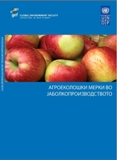Water Management
The area of land that catches precipitation and drains it to a water body (river, lake) is called a basin. It can range in size from a few hectares to thousands of square kilometers. In a watershed the human activities on land and what happens to water and subsequently to the organisms that use water are interconnected. Thus, a basin-wide approach is the key to successful water management.
Basin-wide Management for Wise Use of Water
Water is essential to life and is arguably our most precious resource. Without appropriate water management we run the risk of overexploitation and contamination of this most essential commodity. Water moves through the global hydrologic cycle. Water from the cloud precipitates and falls to earth and drains from the land transporting dissolved and solid materials from the land to the surface water and/or to ground water. This drainage water and these materials modify the physical, chemical and subsequent biological waterscapes of streams and lakes.
It focuses efforts to identify and plan for these interactions in the basin. Basin management seeks both to preserve the environment and to use the most cost-effective means to achieve this goal.
Getting to know the Prespa basin
The total Prespa area, combining the drainage basins and the lakes, is 2,519.1km2. Micro Prespa (total surface app. 47.4 km2) belongs to Greece (43.5 km2), while a smaller part (approx. 4 km2) belongs to Albania. Macro Prespa (total surface app. 259.4 km2) is divided between the three states, with the largest part belonging to The Former Yugoslav Republic of Macedonia. The lakes Micro and Macro Prespa are situated at approximately 850 meters above sea level amidst mountains rising to over 2,000 m.a.s.l. The highest peak in the region is located on the Pelister Mountain (2,601m). There are four islands in the lakes, Aghios Achillios and Vidronissi, at the Greek part of Micro Prespa, and Mali Grad and Golem Grad in Macro Prespa in Albania and the The Former Yugoslav Republic of Macedonia respectively.
Every basin is of some use, or value, to human communities, including use for aesthetic enjoyment or preservation of natural condition.
There are also less obvious water uses, such as a variety of land-based activities, including forestry, tillage, planting, harvesting, drainage, and construction activities. All of these activities affect the water resources in the Prespa lakes basin.
What are the water uses?
Every basin is of some use, or value, to human communities, including use for aesthetic enjoyment or preservation of natural condition.
- Potable water supply (both surface and ground water)
- Farming (eg. irrigation, livestock watering, livestock housing wash water);
- Recreation and tourism (eg. recreational fishing, swimming, aesthetic enjoyments,bird watching, recreational boating);
- Commercial and amateur fishery
- Industrial water supply (process water supply, coolant);
- Fish and wildlife habitat (aquatic and riparian habitats,protection of rare and endangered species);
- Water treatment functions (purification of wastewater, assimilation of storm-water);
Management
One of the goals of the UN declared International Decade for Action, ‘Water for Life’ 2005-2015 is for all countries to stop the unsustainable exploitation of water resources and to develop integrated water resource management.
From the basin-wide perspective, the major water management issues in the Prespa lakes basin include: (1) the lack of basin-wide planning and management; (2) significant water level fluctuation of the lakes (including a significant drop of the Macro Prespa water level); (3) water quality deterioration (eutrophication); and (4) the lack of basin condition monitoring.
The Macro Prespa Lake has especially suffered from three sharp water level drops, which took place during the following periods: 1975/1977 (1.2 m), 1987/1990 (3.7 m) and 2000/2002 (2.2 m). The causes of this phenomenon have not yet been fully investigated. However, it has been estimated that lost water volumes are by factors 2 to 6 higher than the estimated amount of water abstracted through human interventions. Parameters that could explain this loss are natural karstic underground outflows and the inflows that are in turn affected by the rainfall/snowfall pattern.
The water quality of the Prespa lakes is obviously affected by human activities and negative impacts on biodiversity have been observed. Currently it is not possible to assess how much water quality and biodiversity have declined and which of the pollutants (communal waste water, industrial effluents, agriculture and sedimentation) are most harmful. Pollution, sedimentation and water abstraction jointly contribute to the degradation of aquatic habitats. The decreased water quality of the Macro Prespa Lake and the decline of beach quality are regarded as severe constraints for the development of tourism.




